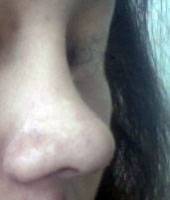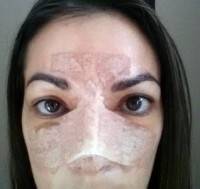Nasal tip rhinoplasty
Nasal tip rhinoplasty is a procedure that’s main purpose is to correct problems involving the nasal tip. Usually this involves reducing the size and bulbosity of the nasal tip cartilages.
However, in some individuals, nasal tip rhinoplasty can also involve adding cartilage to the tip to create additional projection or shape. As you might expect this procedure takes less time and is less expensive than a traditional rhinoplasty. (Daniel Reichner, MD, Newport Beach Plastic Surgeon)
In a “Nasal tip rhinoplasty,” the surgeon has determined with your input that the only area where your nose needs change is in the tip. There isn’t a bump on the bridge, the bones aren’t too wide etc.
Nasal tip rhinoplasty is designed to produce a more delicate refined tip and is frequently performed “open” with an incision across the columella between the nostrils along with incisions inside the nose.
This allows the surgeon to directly see the cartilage structures of the tip and use sculpting, sutures and even grafts to provide the optimum result. The recovery is usually minimally painful and there typically isn’t any bruising as there can be in a more extensive rhinoplasty. (Richard P. Rand, MD, FACS, Seattle Plastic Surgeon)
A nasal tip rhinoplasty usually refers to treating the tip of the nose. Therefore, no work is performed on the septum or the dorsum( i.e Hump or depressed bridge).
Usually this is for patients that want a more refined tip because the tip is too bulbous or round. (Steven Wallach, MD, Manhattan Plastic Surgeon)
Tip plasty to get balanced nose appearance
Nasal tip rhinoplasty is performed on select noses where only the tip is too wide (bulbous) and out of balance relative to the rest of the nose. A tip plasty is performed to reduce and refine the tip to balance with the rest of the nose.
The bridge of the nose is not altered. The remainder of the nose has to look great, otherwise an entire rhinoplasty is performed. The tip plasty procedure can involve suture techniques of the lower lateral cartilages to refine and narrow the tip.
Occasionally tip cartilage is removed if the pre-existing cartilage is too wide, and sometimes tip grafting techniques are used to give more projection to the tip when needed. A tip plasty does not involve bridge work, hump reduction, alar plasty or osteotomies. (William Portuese, MD, Seattle Facial Plastic Surgeon)
The tip of the nose is small, but very significant!
Nasal tip rhinoplasty refers to adjustments made in position, size, and or shape of the tip of your nose and nostril areas. Open or closed approaches can be made.
Careful attention has to be paid to the fact that concentration on the tip of the nose alone can result in disharmony of the nose if your surgeon is not being very careful. I find that nasal tip rhinoplasty is most useful in my revision rhinoplasty patients who develop or have recurrent tip abnormalities after a previous nasal surgery.
The rest of the nose looks great and the tip is all that needs to be corrected. Nasal tip rhinoplasty is by no means easy. (Manish H. Shah, MD, FACS, Denver Plastic Surgeon)
When a surgeon plans a Rhinoplasty, 3 basic parts of the nose are always considered. The nose is typically broken up into 1/3rds. The upper third is the nasal bones, which can be responsible for a wide nasal bridge and is usually a component of a nasal hump.
The middle third is the cartilaginous vault, where the nasal septum and cartilage canopy exist. This area is typically also involved in a bump, but, more importantly, has a critical role in nasal deviation and nasal obstruction. Finally, the lower third, or nasal tip, is the lowest and most mobile portion of the nose. Drooping of the tip, excess volume or width of the tip, and nostril asymmetry are the most common problems seen in this region.
Nasal tip rhinoplasty is, therefore, any operation that seeks to change the volume, angle, or height of the nasal tip. Alterations can range from simple to complex, depending on the degree and scope of an individual patient’s problem.
A wide variety of outcomes are typically possible, depending on both the patient’s desires and the surgeon’s aesthetic sense. It is critical that this region balances with the rest of the nose and the overally structure of a patient’s face and body.
The nasal tip is the area where, if this balance is not achieved, an “operated” appearance may result. Various types of techniques, including suture modification, cartilage excision, or structural grafting may be used to achieve the desired aesthetic outcome. (Richard W. Westreich, MD, Manhattan Facial Plastic Surgeon)



